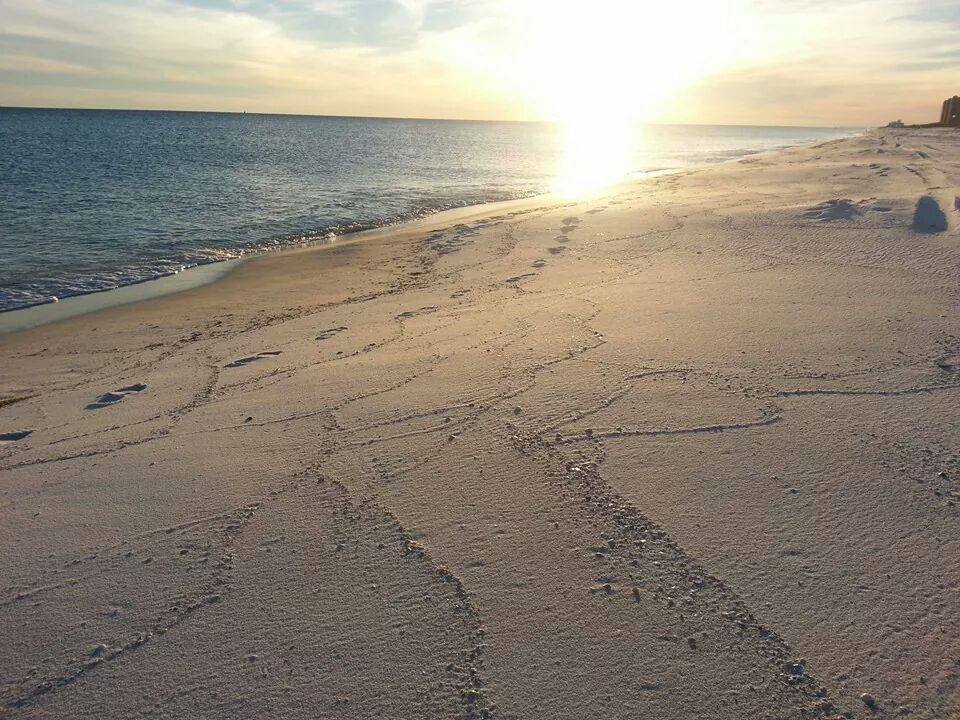Images of Florida’s beautiful Emerald Coastline and Pensacola’s white sand beaches almost always showcase our blue-green waters and our gorgeous white sugar sand. If you drag your feet while walking on Pensacola Beach the sand will squeak under your toes. The tiny grains are a powerful force. They protect our Florida mainland with the dunes on the barrier islands and eventually erode away almost anything when blown in the wind. Our beaches on the Northern coast of the Gulf of Mexico are particularly beautiful and have traveled long distances to where they rest.
Florida’s Beaches
Beaches are formed by wave action which is why you won’t find many of them in the Florida Keys. The Great Florida Reef protects the Keys from the wave action that deposits sand. South of Florida’s Big Bend you’ll find beaches made of crushed coral. Parrot fish eat dead coral and process it into sand grains which then wash up on the land. In other words, the vast majority of Florida’s beaches consist of a lot of parrot fish poo.
A Beach Made of Mountains?
Our white Pensacola beaches were born in the Central Pangean mountains 480 million years ago. These mountains consist of many minerals from cooled magna extruded from the earth. 150 million years ago Pangaea separated into the continents we know today. The mountains had long been eroding and parted with the land masses as they drifted. The northern portion of the Central Pangean mountain range is now in Scotland and the southern portion is the Little Atlas in Morocco. The middle now stretches from southeastern Canada to southern Kentucky and are our Appalachian Mountains.
There were several upheavals and erosions that have brought the mountains to where they are today. These geographical changes have redirected the water drainage from the range. Historically, the southern portion of the range drained into the Gulf of Mexico via the Apalachicola River, ending near the Big Bend of Florida. These days it ultimately drains into the Mississippi River, flowing into the Gulf at the Mississippi Delta.
These waters brought the erosions of the ancient mountains with all of their rich mineral content to the Gulf of Mexico. There the currents carried and spread sediment across the northern border of the Gulf from southern Louisiana to the Big Bend of Florida. Water soluble minerals were dissolved by the Gulf waters, quartz has outlasted less durable deposits. Quartz is a very rugged mineral made of silica and oxygen. It is all that remains of the Apalachicola Mountain range sediments deposited into the Gulf of Mexico. These tiny uniform grains of quartz give us, without a doubt, the purest and whitest sands in the state.
Sand Dunes
While exploring our gorgeous sands don’t forget to protect the fragile dunes that keep our barrier islands intact. Do not disturb the vegetation or wildlife that help maintain the balance and health of the dunes and prevent their erosion. The dunes protect our islands, infrastructure and homes. Be sure to drag your feet and hear the sand squeak. Keep an eye out for fulgurites, created when lightning strikes the sand, melting it into beautiful and complex shapes of glass. Book your pontoon rental here and enjoy the beauty of our Emerald Coast and Pensacola’s beautiful white sand beaches!



Recent Comments